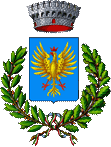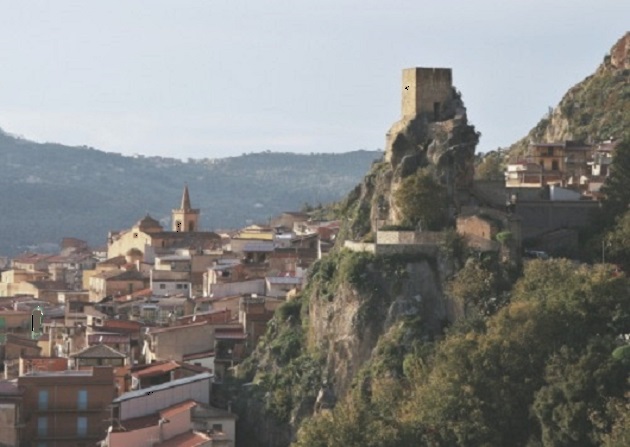

Circa le sue origini esiste una leggenda che vuole essa sia stata fondata da Patrone, greco di Turio (Magna Grecia), al seguito di Enea. Altra ipotesi infondata da fonti storiche è quella che la identifica con Demenna o anche quella che la identifica con Krastos.
L’ipotesi più accertata da fonti è quella che fa risalire la sua fondazione al 855, dopo la distruzione di Crasto e Demena da parte dei Saraceni da cui deriverebbe il nome Al Qarya (il centro urbano) o quello di Akaret (fortezza).
Il primo riferimento storico è un documento redatto in greco del Conte Ruggero del 1082, con cui assegnava al Vescovo di Messina-Troina le terre di Alcara: "....diedi anche il castello di Alcara, presso Demenna, con i suoi possedimenti.…".
Da questo periodo inizia la sua storia, intrecciandosi alla vita del santo eremita basiliano, San Nicolò Politi, protettore di Alcara che ne custodisce le venerate spoglie mortali.
Successivamente prese il nome di Alcara Valdemone, per l’appartenenza amministrativa alla Val Demone.
Nel XV secolo era presente una comunità ebraica che la rese fiorente per I numerosi scambi commerciali, scomparsa dopo l’espulsione dalla Sicilia degli ebrei non convertiti.
Nel 1812, con l’abolizione delle circoscrizioni tra cui la Val Demone, prese il nome di Alcara Li Fusi, poichè centro di produzione di fusi per la filatura.
Il 17 maggio 1860, Alcara fu interessata da una rivolta contadina che in vista dell’immente arrivo dei garibaldini in cui nutrivano speranze di riscossa, assaltarorono il “casino dei nobili”, mietendo numerose vittime. I garibaldini giunti in paese imprigionarono I rivoltosi e dopo un rapido processo li giustiziarono. Questo episodio è narrato in “il sorriso dell’ignoto marinaio” di Vincenzo Consolo.
Segno delle remote origini appartiene anche l’antica festa del “Muzzuni” festa pagana che mostra i tratti distintivi di riti risalenti alla civiltà ellenica, retaggio di un antico rito legato al mondo contadino. Il rito propiziatorio alla fertilità della terra è anche un inno alla natura, all'amore e alla giovinezza.
La festa era legata al solstizio d’estate e anticamente si svolgeva il 21 giugno, poi spostata al 24 giugno e legata alla festa di S. Giovanni Battista, da allora gli antichi elementi pagani si mescolano a quelli cristiani.
“Muzzuni” si riferisce forse alla brocca priva di collo (mozzata) o al grano falciato e raccolto in fasci (mazzuna), il riferimento alla testa mozzata del Battista è evidente.
La festa si svolge nella notte del 24 giugno
Inizia all’imbrunire con la preparazione da parte delle donne di altarini che alloggeranno il “muzzuni”. tutt’intorno vengono appese le “pizzate” (tappeti tipici tessuti nel tradizionale telaio a pedale, usando ritagli di stoffa). Sulle pizzate si poggiano I piatti con I “laureddi” (steli di grano germogliati al buio), spighe ed oggetti del mondo contadino.
Quindi le donne preparano il Muzzuni, cioè una brocca dal collo mozzo, rivestita da un foulard di seta con gli ori delle famiglie del quartiere. Dalla brocca fuoriescono steli di germogli di orzoe grano, lavanda, spighe di grano maturo e garofani.
Dopo la preparazione del Muzzuni una giovane, simboleggiante un’antica sacerdotessa pagana, lo esce e lo colloca sull’altare.
Quindi ogni quartiere anima la festa con musiche e canti popolari. I cantori intrecciano Chianote e Ruggere, canti polifonici sul tema della vita contadina e dell’amore. Duetti uomo-donna, canti di corteggiamento ma anche di amore non corrisposto, mentre si rinnova il Rito del Companatico tramite il quale si rafforzano vecchie amicizie e se ne iniziano di nuove. I due che vogliono suggellare un’amicizia si scambiano confetti (Cunfetta) e recitano:
Iriteddu facitini amari
chi 'nni ficimu cumpari
'nzoccu avemu 'nni spartemu
e mai 'nni sciarriamu
cumpari semu e cumpari ristamu
quannu veni 'a morti 'nni spartemu.
Traduzione:
Piccolo dito facci amare
perchè ci siamo fatti compari
quello che abbiamo ci dividiamo
e giammai ci bisticciamo
compari siamo e compari restiamo
quando viene la morte ci separiamo.
(English)
Regarding its origins, there is a legend that says it was founded by Patron, a greek from Turio (Magna Grecia), following Aeneas. Another hypothesis that is unfounded by historical sources is the one that identifies it with Demenna or even the one that identifies it with Krastos.
The most established hypothesis from sources is that it was founded in 855, after the destruction of Crasto and Démena by the Saracens, from which the name Al Qarya (the urban centre) or Akaret (fortress) would derive.
The first historical reference is a document drawn up in greek by Count Roger in 1082, in which he assigned the lands of Alcara to the Bishop of Messina Troina: “ diedi anche il castello di Alcara, presso Demenna, con I suoi possedimenti…”.
This period marked the beginning of its history, intertwining with the life of the Basilian hermit saint, San Nicolò Politi, protector of Alcara, where his venerated mortal remains are kept.
Later it took the name of Alcara Valdemone, due to its administrative affiliation with the Val Demone.
In the 15th century there was a Jewish community that made it flourish because of the numerous trade exchanges, which disappeared after the expulsion from Sicily of the non-converted Jews.
In 1812, with the abolition of the districts including Val Demone, it took the name of Alcara Li Fusi, as a centre for the production of spindles for spinning.
On 17 May 1860, Alcara was involved in a peasant revolt that, in view of the imminent arrival of Garibaldi’s troops, in which they had hopes of redemption, attacked the “casino dei nobili” ( gambling of the Nobles), claiming many victims. The Garibaldians arrived in the village and imprisoned the rebels and, after a quick trial, executed them. This episode is recounted in Vincenzo Consolo’s “Il sorriso dell’ignoto marinaio” (the smile of the unknown sailor).
The ancient feast of the “Muzzuni”, a pagan festival that shows the distinctive features of rites dating back to the Hellenic civilisation, a legacy of an ancient rite linked to the peasant world, is also a sign of its remote origins. The rite propitiatory to the fertility of the land is also a hymn to nature, love and youth.
The festival was linked to the summer solstice and used to be held on 21 June, then moved to 24 June and linked to the feast of St. John the Baptist, since when the ancient pagan elements have been mixed with Christian ones.
“Muzzuni” perhaps refers to the jug with no neck (cut off) or to the wheat mown and gathered in bundles (mazzuna), the reference to the severed head of St. John the Baptist is obvious.
The festival takes place on the night of 24 June.
It begins at dusk with the preparation by the women of altars to house the “muzzuni”. The “Pizzate” (typical carpets woven in the traditional treadle loom, using scraps of cloth) are hung all around. Plates with “laureddi” (wheat stalks sprouted in the dark), ears of corn and objects from the peasant world are placed on the “pizzate”.
Then the women prepare the “Muzzuni”, a pitcher with a hollow neck, covered with a silk scarf with the gold of the families of the neighbourhood. Stems of barley and wheat sprouts, lavender, ears of ripe wheat and carnations come out of the jug.
After the “Muzzuni” has been prepared, a young woman, symbolizing an ancient pagan priestess, takes it out and places it on the altar.
Then each district animates the festival with music and popular songs. The singers weave Chianote and Ruggere, polyphonic songs on the theme of country life and love. Man-woman duets, songs of courtship but also of unrequited love, while the Rito del Companatico is renewed, strengthening old friendships and starting new ones. The two who want to seal a friendship exchange sugared almonds (Cunfetta) and recite:
Iriteddu facitini amari
chi 'nni ficimu cumpari
'nzoccu avemu 'nni spartemu
e mai 'nni sciarriamu
cumpari semu e cumpari ristamu
quannu veni 'a morti 'nni spartemu.
Translation:
Little finger make us love
Because we have made ourselves
partners
what we have we share
and never we quarrel
We are equals and we remain equals
When death comes we separate.